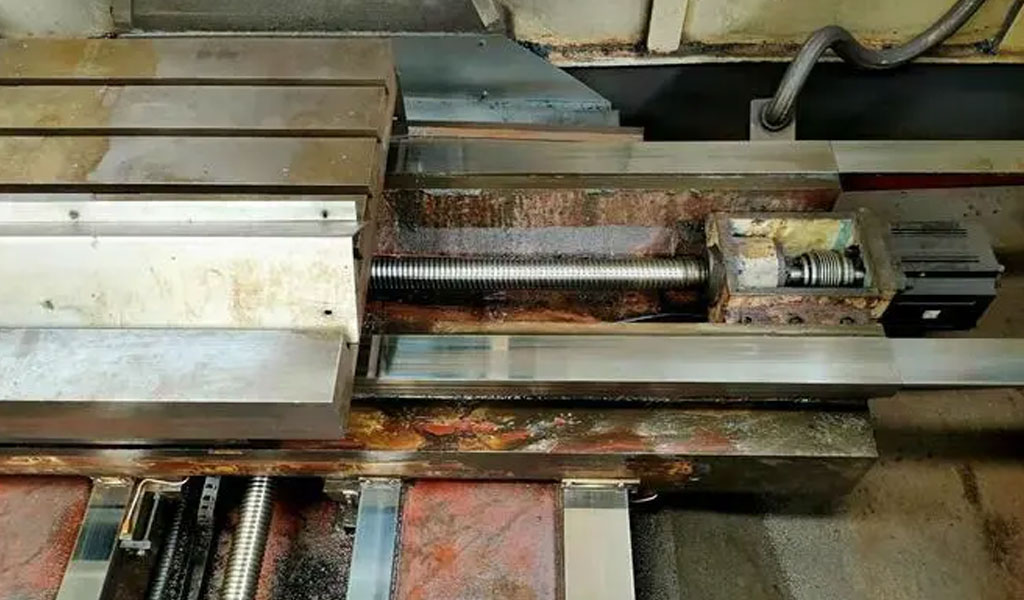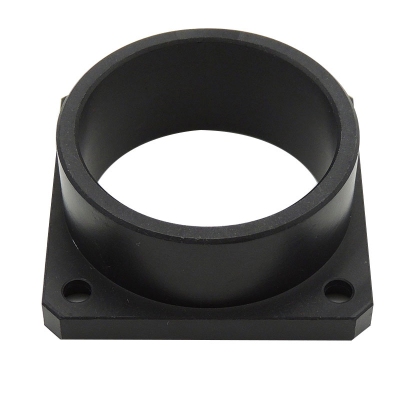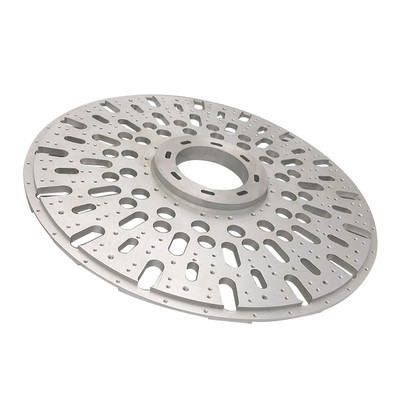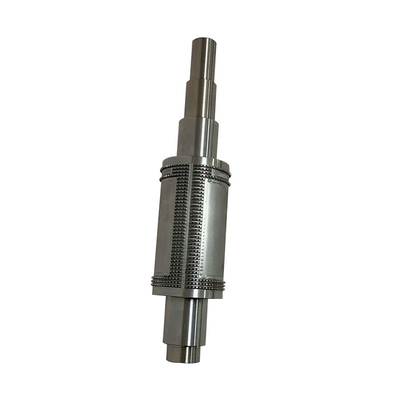What is Milling a Road

Road milling, also known as asphalt milling or pavement milling, is a crucial component of modern road construction and maintenance. It is the process of removing a portion of the existing asphalt or concrete surface from a roadway to allow for resurfacing or to repair damage. This method is widely used across the globe to maintain and extend the lifespan of roadways by improving their quality and functionality.
1. Overview of Road Milling
Road milling involves the use of specialized machines to remove the surface layer of a roadway. The process can be conducted to various depths, depending on the requirements of the project. Milling is typically carried out before laying new asphalt or concrete, which allows for a smooth, even surface and ensures proper bonding between the old and new materials.
The practice of road milling has evolved significantly since its inception. Early road milling methods were rudimentary and labor-intensive, relying on basic tools and manual labor. With the advent of modern machinery and technological advancements, road milling has become more efficient, precise, and widespread. The development of milling machines in the 1970s revolutionized the process, enabling the removal of larger quantities of material with greater accuracy.
2. Road Milling Machines
2.1 Types of Milling Machines
Road milling machines, also known as cold planers, are classified into several types based on their size, function, and operational capacity. These machines are equipped with rotating drums that are fitted with cutting teeth. The primary types of road milling machines include:
- Small Milling Machines: These machines are ideal for minor surface repairs and can mill to a depth of around 50 mm (2 inches). They are typically used for jobs such as removing road markings or repairing small sections of asphalt.
- Compact Milling Machines: Compact milling machines are versatile and can be used for both minor and major road repairs. They are capable of milling to greater depths and are commonly used for urban road maintenance.
- Large Milling Machines: These machines are used for large-scale projects, such as highway resurfacing or airport runway maintenance. They are capable of milling to depths of 300 mm (12 inches) or more, depending on the model.
2.2 Key Components of Milling Machines
Milling machines consist of several critical components that work together to achieve the desired results. These components include:
- Milling Drum: The milling drum is the heart of the machine, equipped with cutting teeth that grind the pavement into small particles. The size and configuration of the drum vary depending on the machine's size and the nature of the project.
- Cutting Teeth: Cutting teeth are attached to the milling drum and are responsible for breaking up the pavement. They are made from high-strength materials like tungsten carbide to withstand the rigors of the milling process.
- Conveyor System: After the pavement is milled, the resulting material is collected and transported away from the site via a conveyor system. This system typically includes a primary conveyor that moves the material from the drum to a secondary conveyor that loads it onto trucks.
- Operator's Cab: The operator's cab is where the machine is controlled. Modern milling machines are equipped with advanced control systems that allow for precise adjustments to the milling depth and speed.
2.3 Technological Advancements in Milling Machines
Over the years, milling machines have seen numerous technological advancements that have improved their efficiency, accuracy, and environmental impact. Some of these advancements include:
- Automated Control Systems: Modern milling machines are equipped with automated control systems that allow for precise control of the milling depth, speed, and other parameters. These systems use GPS and laser technology to ensure that the milling process is accurate and consistent.
- Enhanced Cutting Teeth: Advances in materials science have led to the development of cutting teeth that are more durable and efficient. These teeth are designed to last longer and cut more effectively, reducing the need for frequent replacements.
- Dust and Noise Reduction: To minimize the environmental impact of milling operations, modern machines are equipped with dust and noise suppression systems. These systems help reduce the amount of dust and noise generated during the milling process, making it more environmentally friendly and less disruptive to nearby residents and businesses.
3. The Milling Process
3.1 Preparation
Before the milling process begins, thorough preparation is required to ensure the project’s success. This involves surveying the area to be milled, determining the appropriate milling depth, and preparing the site by removing any obstacles or debris. Traffic management plans may also be implemented to ensure the safety of both workers and road users during the milling operation.
3.2 Milling Operations
The milling operation itself involves several steps:
-
Setting the Milling Depth: The milling depth is determined based on the condition of the existing pavement and the specifications of the resurfacing project. This depth can range from a few millimeters to several inches.
-
Milling the Surface: The milling machine is positioned at the starting point, and the cutting drum is lowered to the desired depth. As the machine moves forward, the rotating drum grinds the pavement surface, breaking it up into small pieces. The machine’s conveyor system then collects the milled material and transports it to a waiting truck or to a stockpile on-site.
-
Inspection and Adjustments: Throughout the milling process, the operator continuously monitors the operation to ensure that the correct depth and profile are being maintained. Adjustments may be made to the machine’s settings to account for variations in the pavement or unexpected obstacles.
-
Removal of Milled Material: The milled material, often referred to as RAP (Reclaimed Asphalt Pavement), is either transported off-site for recycling or stockpiled for later use. RAP can be used in the production of new asphalt, making the milling process more sustainable and cost-effective.
3.3 Post-Milling Activities
After the milling operation is complete, the road surface is inspected to ensure that it meets the project’s specifications. Any irregularities or remaining debris are addressed before the resurfacing process begins. In some cases, the milled surface may be temporarily reopened to traffic while preparations are made for the final resurfacing.
4. Applications of Road Milling
4.1 Resurfacing
One of the primary applications of road milling is to prepare a roadway for resurfacing. By removing the top layer of asphalt or concrete, milling creates a clean, even surface that allows for better adhesion of the new material. This process is essential for extending the life of a roadway and improving its overall performance.
4.2 Full-Depth Reclamation
In cases where the pavement has deteriorated significantly, full-depth reclamation may be necessary. This process involves milling the entire pavement structure, including the base layers, and then mixing the milled material with new aggregates and binders to create a new, stabilized base. This method is cost-effective and environmentally friendly, as it recycles the existing pavement material.
4.3 Road Widening
Milling is also used in road widening projects, where the existing roadway needs to be expanded. In these cases, the milling machine is used to remove a portion of the pavement along the edges of the road, making room for the new lanes. This process ensures that the new pavement will be properly integrated with the existing roadway.
4.4 Surface Repair
Milling is commonly used for surface repairs, such as fixing potholes, ruts, or cracks in the pavement. By removing the damaged portion of the roadway, milling allows for targeted repairs that restore the road’s structural integrity and smoothness.
5. Environmental and Economic Impacts of Road Milling
5.1 Environmental Benefits
Road milling has several environmental benefits, particularly when it comes to recycling and sustainability. The milled material (RAP) can be reused in new asphalt production, reducing the need for virgin materials and minimizing waste. Additionally, modern milling machines are equipped with dust and noise suppression systems, making the process more environmentally friendly.
5.2 Economic Considerations
From an economic perspective, road milling is a cost-effective method for maintaining and repairing roadways. By extending the life of existing pavements, milling reduces the need for complete reconstruction, which can be expensive and time-consuming. The ability to recycle RAP also contributes to cost savings, as it reduces the demand for new materials.
6. Challenges and Limitations
6.1 Technical Challenges
Despite its many advantages, road milling is not without its challenges. One of the primary technical challenges is achieving the correct milling depth, particularly in areas with uneven pavement or varying subsurface conditions. Ensuring that the milling machine maintains a consistent speed and depth is critical to the success of the operation.
6.2 Weather Conditions
Weather conditions can also impact the milling process. Cold or wet weather can make the pavement more difficult to mill, while extreme heat can cause the asphalt to become too soft, leading to irregularities in the milled surface. Operators must carefully monitor weather conditions and adjust their operations accordingly.
6.3 Equipment Maintenance
Maintaining the milling equipment is another challenge, as the cutting teeth and other components are subjected to significant wear and tear. Regular inspections and maintenance are essential to ensure that the equipment remains in good working order and that the milling operation proceeds smoothly.
7. Future Trends in Road Milling
7.1 Technological Innovations
The future of road milling is likely to be shaped by ongoing technological innovations. Advances in automation, machine learning, and artificial intelligence could lead to more sophisticated milling machines that are capable of self-monitoring and adjusting their operations in real time. These innovations could improve the efficiency, accuracy, and safety of the milling process.
7.2 Environmental Sustainability
As environmental concerns continue to grow, the road milling industry is likely to place an even greater emphasis on sustainability. This could involve the development of more energy-efficient machines, as well as the use of alternative materials and methods that reduce the environmental impact of road construction and maintenance.
7.3 Integration with Smart Infrastructure
Another trend that could shape the future of road milling is the integration of milling operations with smart infrastructure. As cities and transportation networks become more connected, there may be opportunities to coordinate milling activities with other infrastructure projects, such as the installation of sensors or the deployment of autonomous vehicles.
8. Conclusion
Road milling is an essential process in modern road construction and maintenance. It plays a critical role in extending the life of roadways, improving their safety and performance, and reducing the environmental impact of road construction. As technology continues to advance, the milling process is likely to become even more efficient, precise, and sustainable, ensuring that our roadways remain in good condition for years to come.
Reprint Statement: If there are no special instructions, all articles on this site are original. Please indicate the source for reprinting:https://www.cncmachiningptj.com/,thanks!
 3, 4 and 5-axis precision CNC machining services for aluminum machining, beryllium, carbon steel, magnesium, titanium machining, Inconel, platinum, superalloy, acetal, polycarbonate, fiberglass, graphite and wood. Capable of machining parts up to 98 in. turning dia. and +/-0.001 in. straightness tolerance. Processes include milling, turning, drilling, boring, threading, tapping, forming, knurling, counterboring, countersinking, reaming and laser cutting. Secondary services such as assembly, centerless grinding, heat treating, plating and welding. Prototype and low to high volume production offered with maximum 50,000 units. Suitable for fluid power, pneumatics, hydraulics and valve applications. Serves the aerospace, aircraft, military, medical and defense industries.PTJ will strategize with you to provide the most cost-effective services to help you reach your target,Welcome to Contact us ( sales@pintejin.com ) directly for your new project.
3, 4 and 5-axis precision CNC machining services for aluminum machining, beryllium, carbon steel, magnesium, titanium machining, Inconel, platinum, superalloy, acetal, polycarbonate, fiberglass, graphite and wood. Capable of machining parts up to 98 in. turning dia. and +/-0.001 in. straightness tolerance. Processes include milling, turning, drilling, boring, threading, tapping, forming, knurling, counterboring, countersinking, reaming and laser cutting. Secondary services such as assembly, centerless grinding, heat treating, plating and welding. Prototype and low to high volume production offered with maximum 50,000 units. Suitable for fluid power, pneumatics, hydraulics and valve applications. Serves the aerospace, aircraft, military, medical and defense industries.PTJ will strategize with you to provide the most cost-effective services to help you reach your target,Welcome to Contact us ( sales@pintejin.com ) directly for your new project.

- 5 Axis Machining
- Cnc Milling
- Cnc Turning
- Machining Industries
- Machining Process
- Surface Treatment
- Metal Machining
- Plastic Machining
- Powder Metallurgy Mold
- Die Casting
- Parts Gallery
- Auto Metal Parts
- Machinery Parts
- LED Heatsink
- Building Parts
- Mobile Parts
- Medical Parts
- Electronic Parts
- Tailored Machining
- Bicycle Parts
- Aluminum Machining
- Titanium Machining
- Stainless Steel Machining
- Copper Machining
- Brass Machining
- Super Alloy Machining
- Peek Machining
- UHMW Machining
- Unilate Machining
- PA6 Machining
- PPS Machining
- Teflon Machining
- Inconel Machining
- Tool Steel Machining
- More Material





